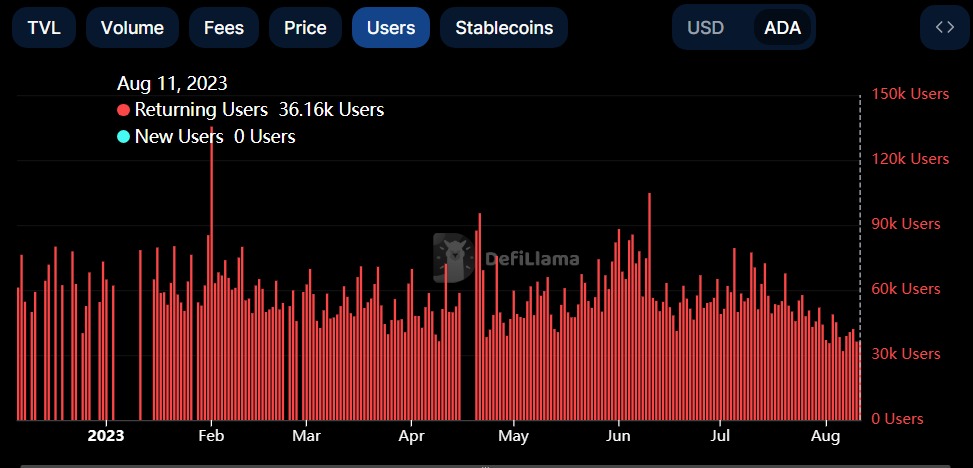Cardano, one of the standard blockchains, can be a extremely controversial one as issues about its ecosystem development stay. Some crypto watchers imagine that it’s a extremely overvalued challenge whereas others argue it’s a ghost chain.
Is Cardano a ghost chain?
A ghost chain is outlined as a crypto challenge that has nothing happening in its ecosystem. And there are such a lot of such chains within the crypto business. Among the prime ghost chains are Kadena, Velas, and XDS Community amongst others.
Cardano, then again, can’t be outlined as a ghost chain as a result of its ecosystem is rising. For instance, its DeFi ecosystem is flourishing even because the crypto winter continues. Information compiled by DeFi Llama reveals that Cardano’s TVL has jumped to $227 million, making it the 14th largest chain on the earth.
In ADA phrases, Cardano’s TVL has jumped to an all-time excessive of over 750 million ADA cash. This development has been pushed by the rising variety of DeFi protocols in Cardano and the efficiency of platforms like MuesliSwap, MinSwap, SundaeSwap, and Indigo.
Additional, Cardano additionally has many customers. As proven under, the community is averaging over 30k every day customers. Most ghost chains hardly ever have any customers.

Cardano can be lively within the NFT business. Information by CryptoSlam reveals that the whole gross sales of Cardano NFTs previously 24 hours totaled $277k, making it the eighth largest participant within the business after Ethereum, Polygon, Mythos, Immutable X, BNB Chain, and Bitcoin.
Cardano’s valuation is stretched
Due to this fact, we are able to conclude certainly that Cardano isn’t a ghost chain. As an alternative, I imagine that Cardano is simply extremely overvalued. In keeping with CoinMarketCap, Cardano is valued at over $10 billion. At its peak, it was valued at over $90 billion.
Regardless of the drawdown, it’s exhausting to elucidate this valuation since $10 billion is some huge cash. Its valuation implies that Cardano is valued larger than American Airways, Lazard, and Moelis.
The most important problem is that the ecosystem is getting extremely aggressive. Most of this competitors is coming from layer-2 networks like Arbitrum, Polygon, Base, and Optimism amongst others.
Cardano has additionally failed to draw the most important gamers in industries like tokenization, stablecoins, and DeFi. As an alternative, large gamers like AAVE, Uniswap, and PancakeSwap have moved to L2 networks.

